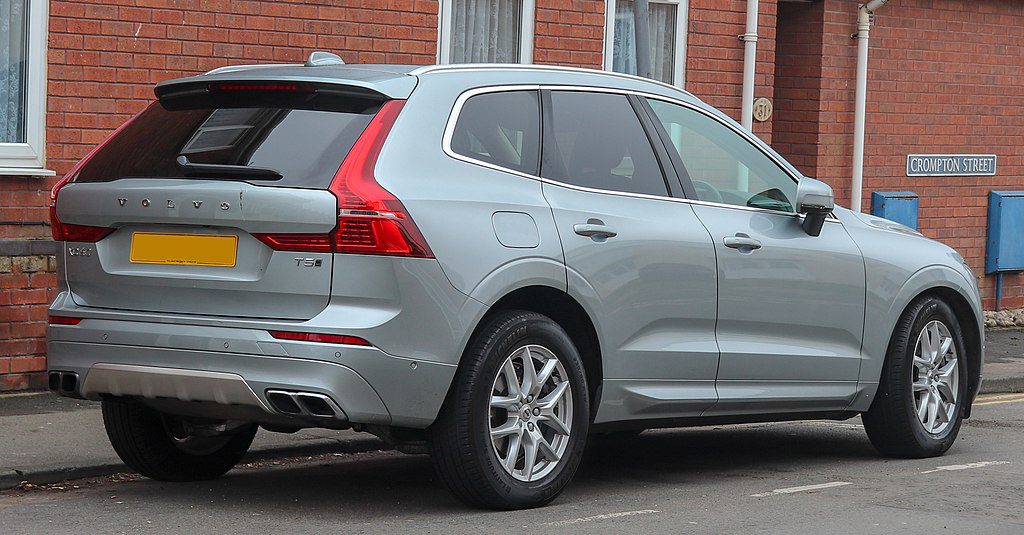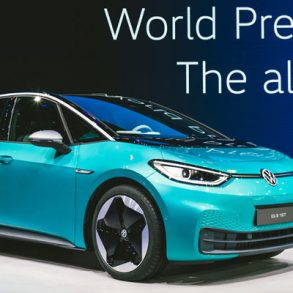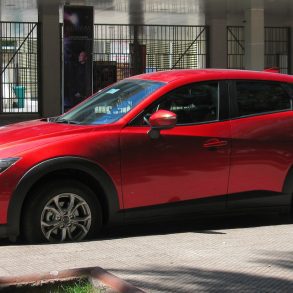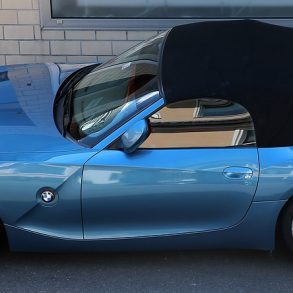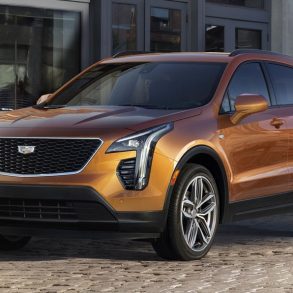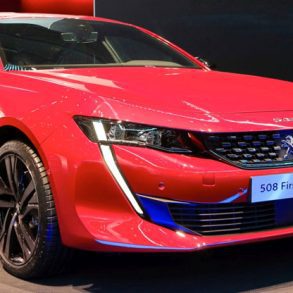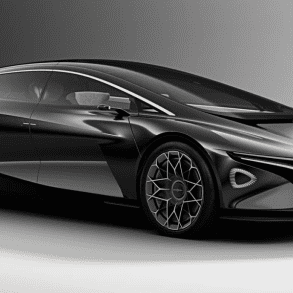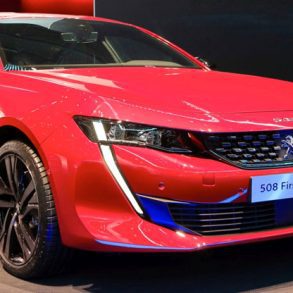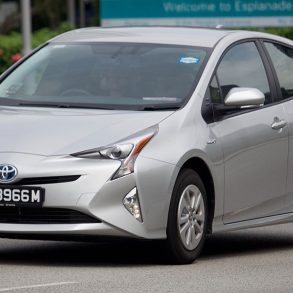After discussing the Alpine A110, DS7 Crossback, Ford Fiesta, Kia Picanto, Mitsubishi Eclipse Cross and Opel/Vauxhall Crossland X in part 1, we’ll continue with the second bunch of Geneva launches. Let us know what you think and vote for your favorites below!
Opel/Vauxhall Insignia
Bart: hot
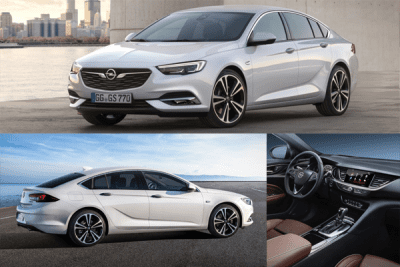 See, they do now how to design a great looking car at Opel/Vauxhall, as the new Insignia proves. Wow, this thing looks more capable then ever to steal each and every one of those 12 private sales annually from the Passat. The rest of the sales in this segment are corporate orders from leasing companies, some of which limit their client’s choices, which means even if the Insignia is the better (and better looking) car, not everyone who wants one will be able to get it. Too bad, because its low and wide proportions and almost coupe-like roofline of the hatchback absolutely make this one of the best looking cars in the segment, right up there with or maybe even ahead of the Renault Talisman and miles ahead of the dull Passat and already long-in-the-tooth Mondeo. Who could’ve said that of an Opel just a few years ago? The Americans are drooling over this thing to make it Stateside again as the Buick Regal (including the Wagon) and that’s actually pretty impressive for a brand that’s been known as a maker of uninspired middle-of-the-road cars for decades.
See, they do now how to design a great looking car at Opel/Vauxhall, as the new Insignia proves. Wow, this thing looks more capable then ever to steal each and every one of those 12 private sales annually from the Passat. The rest of the sales in this segment are corporate orders from leasing companies, some of which limit their client’s choices, which means even if the Insignia is the better (and better looking) car, not everyone who wants one will be able to get it. Too bad, because its low and wide proportions and almost coupe-like roofline of the hatchback absolutely make this one of the best looking cars in the segment, right up there with or maybe even ahead of the Renault Talisman and miles ahead of the dull Passat and already long-in-the-tooth Mondeo. Who could’ve said that of an Opel just a few years ago? The Americans are drooling over this thing to make it Stateside again as the Buick Regal (including the Wagon) and that’s actually pretty impressive for a brand that’s been known as a maker of uninspired middle-of-the-road cars for decades.
Kriss: hot
I can see that Bart really, really likes the new Insignia, and it’s not hard to see why. For starters it is a really good-looking car, with great proportions (for a FWD car) and nice, sharp detailing, even if personally I prefer the previous-generation model, as well as the latest Passat. The interior is pretty nice too, though personally I wonder if the central console is as nice in a mid-sized car as it is in the compact Astra or compact crossover Crossland X. Ultimately though, while I can’t think of what more Opel could have done for the Insignia, I don’t think this car can do better than to regain a distant-second to the Passat in European sales.
Porsche Panamera Sport Turismo
Kriss: so-so
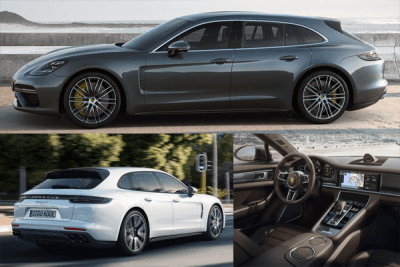 When Porsche showed off the Sport Turismo concept five (!) years back I started salivating on the spot – here was this amazing wagon, a genuinely great-looking 5-door Porsche – in essence, everything the first-generation Panamera was not. But before then and now, when Porsche debuted the production version of the wagon Panamera, two things happened. First, five years passed, an eon in car design. Second, Porsche came out with the second-generation Panamera liftback, clearly inspired by the Sport Turismo concept, which is one hell of a good-looking machine. Suddenly, by comparison, the Panamera Sport Turismo is no longer quite the stunner the concept was, partly because production reality dulled the shape (especially around the back, and in detailing of the flanks), but mostly because the shape is ultimately a bit weirdly-proportioned: not long enough to imitate classic, British “shooting brakes”, or to really, truly look like a wagon. If anything, the Sport Turismo reminds me of these cars that are in-between a hatchback and wagon models, like the Subaru Impreza wagon or Mazda 323F from the late 1990s, or the Audi A3 Sportback.
When Porsche showed off the Sport Turismo concept five (!) years back I started salivating on the spot – here was this amazing wagon, a genuinely great-looking 5-door Porsche – in essence, everything the first-generation Panamera was not. But before then and now, when Porsche debuted the production version of the wagon Panamera, two things happened. First, five years passed, an eon in car design. Second, Porsche came out with the second-generation Panamera liftback, clearly inspired by the Sport Turismo concept, which is one hell of a good-looking machine. Suddenly, by comparison, the Panamera Sport Turismo is no longer quite the stunner the concept was, partly because production reality dulled the shape (especially around the back, and in detailing of the flanks), but mostly because the shape is ultimately a bit weirdly-proportioned: not long enough to imitate classic, British “shooting brakes”, or to really, truly look like a wagon. If anything, the Sport Turismo reminds me of these cars that are in-between a hatchback and wagon models, like the Subaru Impreza wagon or Mazda 323F from the late 1990s, or the Audi A3 Sportback.
Bart: hot
Porsche must’ve thought: if you can’t beat them at their own game, change the game. The Panamera was always too sporty to be a real limousine that would rival the S-Class or 7-Series, but it did carve out a pretty impressive niche for itself as the driver’s car in a segment that assumed the buyer would be chauffeured. The second generation Panamera smoothed out the rough edges in the design, but now Porsche wants to be a pioneer in this segment again by launching a shooting brake version of the Panamera. Well, technically a shooting brake would have two doors and a rear hatch while the Sport Turismo has four doors and a hatch, but what else would you call it? It’s not a real wagon and Mercedes-Benz uses the monniker for its CLS hatchback too. I find the Sport Turismo much more visually appealing than the regular Panamera and its added practicality may even mean this will be the most popular version by a large margin. My guess: the next generation Panamera will be available in this version only, they won’t even bother with a sedan (hatchback?) anymore.
Range Rover Velar
Bart: hot
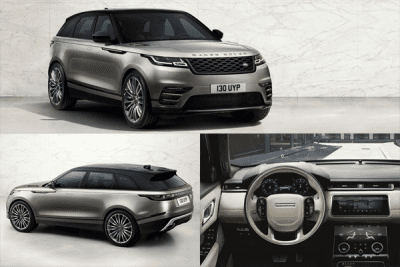 Another Range Rover? Another brand following the same-sausage-different-size strategy? Well, not exactly. The Velar isn’t just more of the same. This is one very sleek looking SUV with the hidden door handles and the high beltline/low roofline giving it an intimitating appearance. And there is room in their line-up between the Evoque and the RR Sport, so why not fill it with something sexy? The Velar will have premium pricing (even more so than its siblings) and will compete with top-of-the-line versions of the Porsche Macan and Jaguar F-Pace, although those models are more sporty than the Velar. The only thing that annoys me about the design is how the black line under the doors and in the rear bumper doesn’t break smoothly at the rear wheels.
Another Range Rover? Another brand following the same-sausage-different-size strategy? Well, not exactly. The Velar isn’t just more of the same. This is one very sleek looking SUV with the hidden door handles and the high beltline/low roofline giving it an intimitating appearance. And there is room in their line-up between the Evoque and the RR Sport, so why not fill it with something sexy? The Velar will have premium pricing (even more so than its siblings) and will compete with top-of-the-line versions of the Porsche Macan and Jaguar F-Pace, although those models are more sporty than the Velar. The only thing that annoys me about the design is how the black line under the doors and in the rear bumper doesn’t break smoothly at the rear wheels.
Kriss: hot
My first reaction to the Velar was much like Bart’s – does the world really need another Range Rover? Luckily, the Velar turned out to be much more than just a “Range Rover Sport Coupe”, a moniker the internet adopted for the model which suggested it would just be the X6 to Range Rover Sport’s X5. If anything, the Velar makes the RR Sport looks old and badly-proportioned, and the Evoque less-than-special. I love the car’s exterior, both in the proportions (look at the size of those wheels!) and in the detailing, while the interior finally seems to move the stodgy RR interior design into the future. I am happy for this to be the future of Range Rover, I just hope the carmaker can make sense of the rest of its portfolio around the Velar – it truly deserves to be the centerpiece.
Seat Ibiza
Kriss: hot
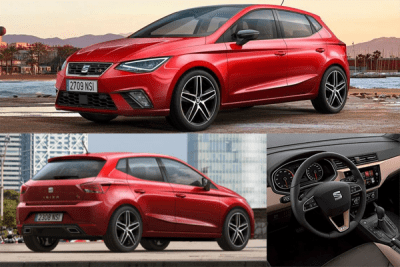 The Ibiza was the harbinger of change for Seat – it was the first modern-day Seat in the pre-VAG days, with its Porsche-fettled engines, and then the following generation was the first model developed on a VAG platform shared with another model (VW Polo). Unfortunately, over the following two generations the Ibiza lost its edge, first gaining ungainly curves, and then ungainly edges. Luckily, the fifth-generation makes up for that – taking advantage of the MQB A0 platform it manages to look wide and squat, with proportions that are, to these eyes at least, better than on any of its competitors. Sure, the exterior looks a ton like the Leon, but given that the big-bro is one of the best-looking cars in its segment that is a good thing. If the Ibiza can take full advantage of the advanced new platform, delivering a sporty-ish ride with immaculate composure, Seat might be onto a real winner here.
The Ibiza was the harbinger of change for Seat – it was the first modern-day Seat in the pre-VAG days, with its Porsche-fettled engines, and then the following generation was the first model developed on a VAG platform shared with another model (VW Polo). Unfortunately, over the following two generations the Ibiza lost its edge, first gaining ungainly curves, and then ungainly edges. Luckily, the fifth-generation makes up for that – taking advantage of the MQB A0 platform it manages to look wide and squat, with proportions that are, to these eyes at least, better than on any of its competitors. Sure, the exterior looks a ton like the Leon, but given that the big-bro is one of the best-looking cars in its segment that is a good thing. If the Ibiza can take full advantage of the advanced new platform, delivering a sporty-ish ride with immaculate composure, Seat might be onto a real winner here.
Bart: hot
I don’t agree with Kriss that the Leon is one of the best looking cars in its segment, and I’m really starting to get tired of the evolutionary design within the VW Group. On the other hand I totally understand why they do this and it seems to be working for them. In fact, think they’ve addressed exactly all the design flaws of the old Ibiza and have made the new one look so much better now, especially from the rear which indeed looks wide and squat. So after my first impression of “What’s new? – so-so” I’ve had to reconsider and give it a hot because I agree they may have a winner here. The Ibiza should be able to give the Skoda Fabia a run for its money again.
Suzuki Swift
Bart: so-so
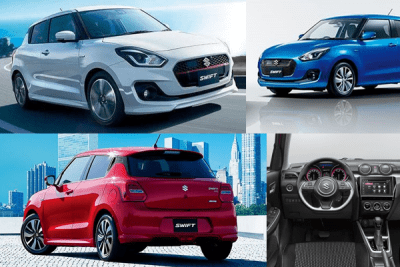 Now that Suzuki has the Baleno to appeal to the value-for-money crowd, that leaves room for the Swift to shift more towards the sporty side of the segment. The design is evolutionary, keeping the general proportions intact as well as the signature floating roof. And I like the broad shoulders above the wheel arches that give it a more muscular look. The front end of the Swift Sport takes more than a few clues of the Jaguar F-Type, but it somehow looks bit messy to me in both the Sport and the regular version. A bit like the way it looks when they try to make a corporate grill fit into an existing design during a facelift. Keeping in mind the Swift sells four times as many units in India than in Europe (plus even more of the sedan version Dzire), I can imagine their tastes are more important than those of Europeans. I think the overall design is a bit too Asian for most European buyers, although it will have its fans. Besides, the Swift nameplate has built up a sizeable amount of brand equity in the past decades so there’s certainly a market for it here. On the other hand, it has got some of the most impressive technology available in its class, with optional adaptive cruise control, auto emergency braking, high beam assist, a mild hybrid system and four wheel drive. Pretty impressive!
Now that Suzuki has the Baleno to appeal to the value-for-money crowd, that leaves room for the Swift to shift more towards the sporty side of the segment. The design is evolutionary, keeping the general proportions intact as well as the signature floating roof. And I like the broad shoulders above the wheel arches that give it a more muscular look. The front end of the Swift Sport takes more than a few clues of the Jaguar F-Type, but it somehow looks bit messy to me in both the Sport and the regular version. A bit like the way it looks when they try to make a corporate grill fit into an existing design during a facelift. Keeping in mind the Swift sells four times as many units in India than in Europe (plus even more of the sedan version Dzire), I can imagine their tastes are more important than those of Europeans. I think the overall design is a bit too Asian for most European buyers, although it will have its fans. Besides, the Swift nameplate has built up a sizeable amount of brand equity in the past decades so there’s certainly a market for it here. On the other hand, it has got some of the most impressive technology available in its class, with optional adaptive cruise control, auto emergency braking, high beam assist, a mild hybrid system and four wheel drive. Pretty impressive!
Kriss: not
I was a huge fan of the reinvented Swift, two generations back. Small, light, with timeless classy looks – it was in many ways more the modern-day successor to the original Mini than its bloated successor has been. Unfortuntely, the model’s progress since then has been… well, to me it has gone decidedly backwards. The looks are now like an overdrawn pastiche of that great model two generations back, the car has gained weight, the interior has become fussier without, seemingly, gaining much in quality. Not Suzuki’s finest hour…
VW Arteon
Bart: so-so
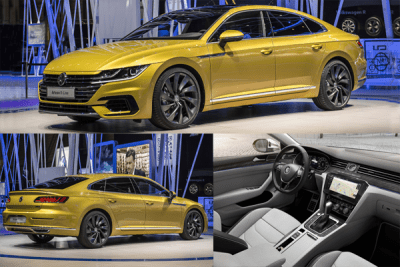 VW can even make a four-door coupe look boring with its industrial design. The Arteon’s basic lines are very sexy and the rear end also looks great with the integrated spoiler and the pronounced hips above the rear wheels, but why couldn’t they make the front end a bit more aggressive? Then again, Volkswagen knows exactly what its customers want and I guess aggressive design is not on the list. Then what do they want? A well-built and luxurious interior full of the latest gadgets, that’s for sure. I guess they want a Passat but their colleagues already have those so they need something similar that sets them apart from (and above) the crowd. In that perspective the execution is excellent.
VW can even make a four-door coupe look boring with its industrial design. The Arteon’s basic lines are very sexy and the rear end also looks great with the integrated spoiler and the pronounced hips above the rear wheels, but why couldn’t they make the front end a bit more aggressive? Then again, Volkswagen knows exactly what its customers want and I guess aggressive design is not on the list. Then what do they want? A well-built and luxurious interior full of the latest gadgets, that’s for sure. I guess they want a Passat but their colleagues already have those so they need something similar that sets them apart from (and above) the crowd. In that perspective the execution is excellent.
Kriss: so-s0
I guess Bart is correct about the Arteon’s raison d’être, but for me that is not a bad thing – when done right, it gives us cars like the CLS or A7, which no one begrudges their roots in the “regular” E-series or A6. And get it wrong and you could get the Opel Signum… ugh, shudder. The Arteon is pretty nice, though no more than that – the step change compared to the Passat is much smaller now that the latest Passat is a good-looking model (unlike its predecessor), and there is definitely something “off” about the front end. Still, as a “budget A7” I think the Arteon is pretty great, and should sell for a nice profit for VW.
Volvo XC60
Kriss: hot
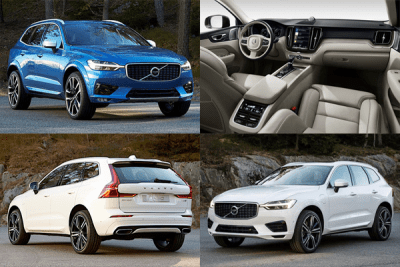 There is no two ways about it – for me, the XC60 goes straight to the top of the segment for me in the desirability stakes. Its looks do a great job of combining the dynamic stance of the F-Pace, the confident elegance of the GLS, and the chiseled detailing of the Q5. The interior is a stunner, and immediately makes the GLC’s look last-year, the Q5’s like an austere sketch done exclusively with a straight ruler, and don’t even mention the F-Pace. The only outstanding question is whether the (almost too pronounced) cab-backward looks harms the XC60’s interior space, but even if it’s not the biggest model in the class, I predict the new XC60 will grab the segment crown in 2018 once production hits full stride.
There is no two ways about it – for me, the XC60 goes straight to the top of the segment for me in the desirability stakes. Its looks do a great job of combining the dynamic stance of the F-Pace, the confident elegance of the GLS, and the chiseled detailing of the Q5. The interior is a stunner, and immediately makes the GLC’s look last-year, the Q5’s like an austere sketch done exclusively with a straight ruler, and don’t even mention the F-Pace. The only outstanding question is whether the (almost too pronounced) cab-backward looks harms the XC60’s interior space, but even if it’s not the biggest model in the class, I predict the new XC60 will grab the segment crown in 2018 once production hits full stride.
Bart: hot
Volvo can’t seem to do wrong with its Swedish design these days. Simple yet elegant and luxurious without being in-your-face. The first generation XC60 has had a very successful career with over 450.000 sold in Europe. It became the brand’s best seller its 8th year on the market with record volume of almost 83.000 sales and was the first Volvo to beat its German rivals in Europe. Even as the competition is heating up, the new generation will undoubtedly build on that strong foundation as it once again takes many design cues from the larger XC90 without looking like just a smaller version of that model.

